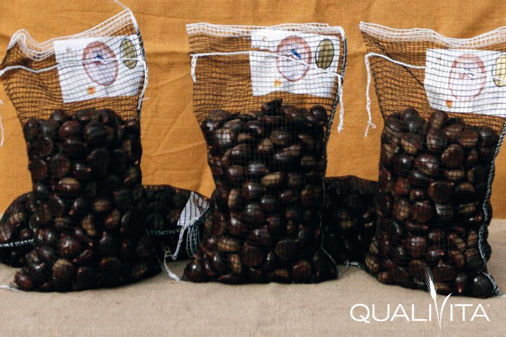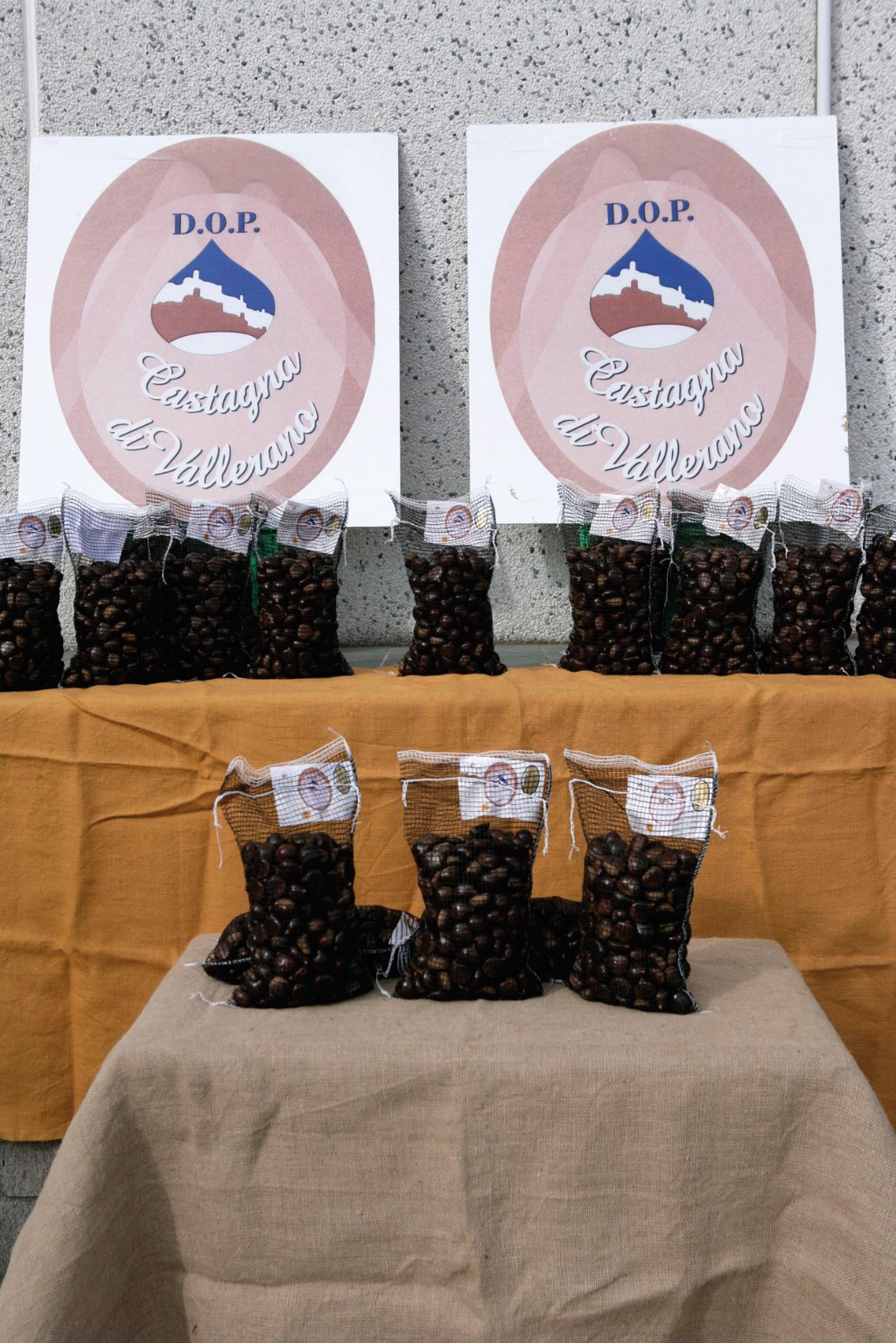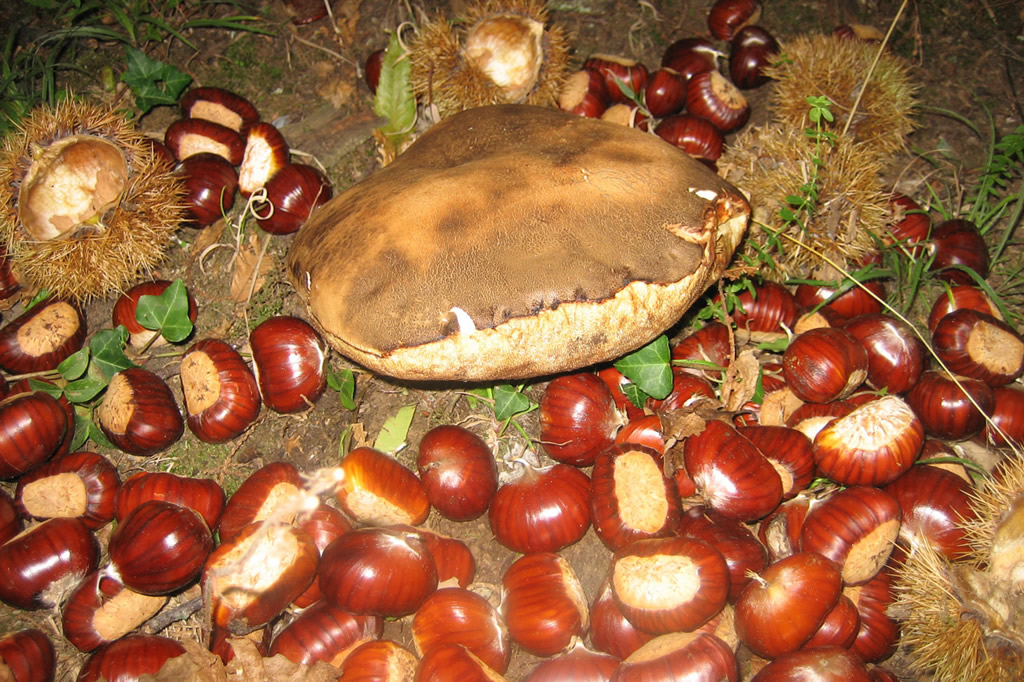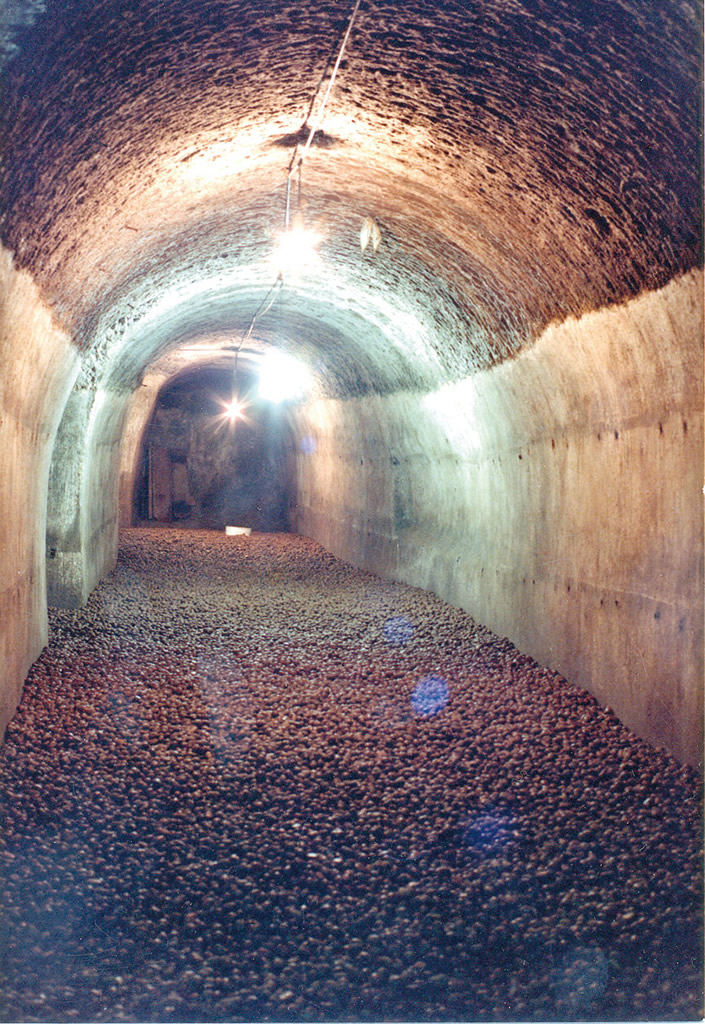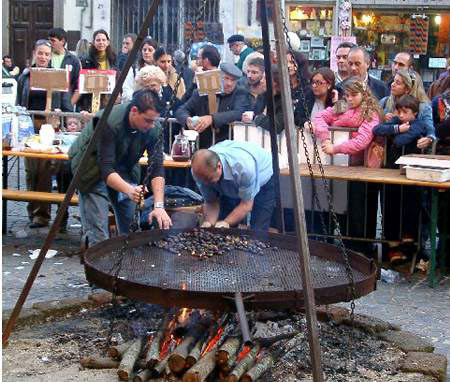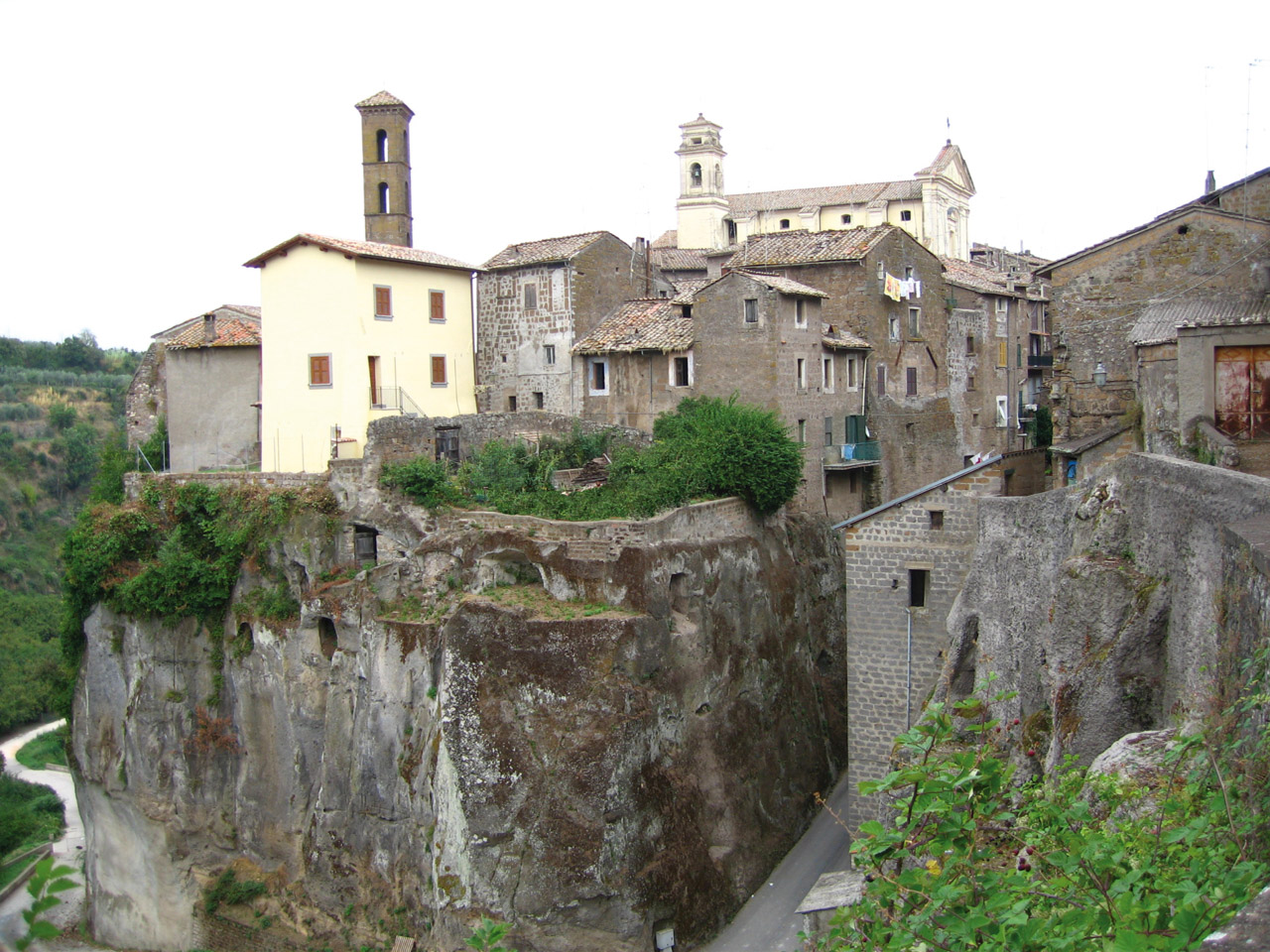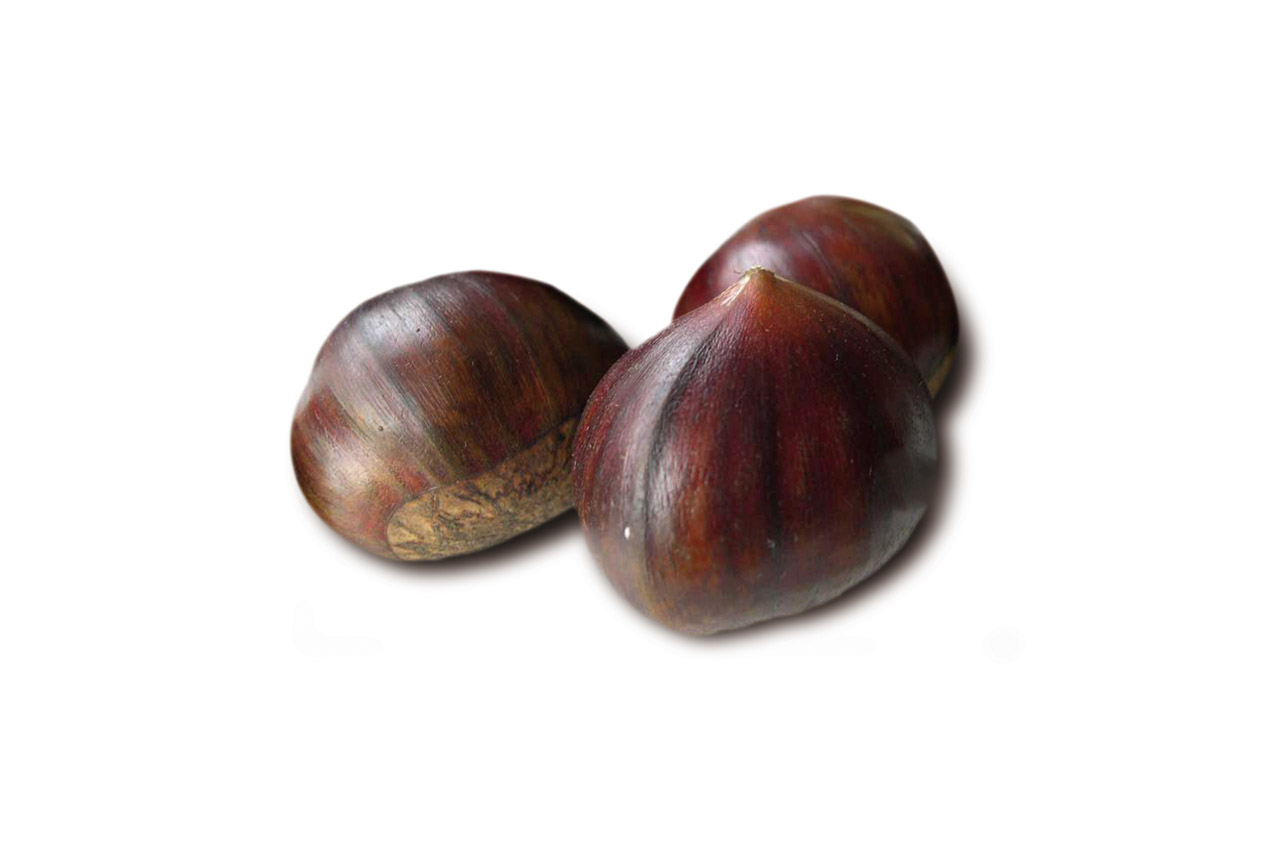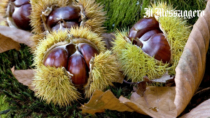Description
The Castagna di Vallerano PDO refers to the fresh chestnut deriving from the local ecotype of the Castanea sativa M. species.
Production Area
The production area of Castagna di Vallerano PDO is within the territory of the Municipality of Vallerano in the Province of Viterbo, in the Lazio region.
Production Method
Castagna di Vallerano PDO is cultivated in chestnut groves situated in areas of volcanic origin, at 400-500 m above sea level. The harvest takes place annually between September 20th and November 10th, either by hand or with towed harvesting suction machines. Productivity ranges from a minimum of 2 to a maximum of 6 tonnes per hectare. The product is preserved in cold water or through sterilisation in hot water followed by soaking in cold water; both treatments are carried out without the use of additives. By tradition, the “cold treatment” takes place in the many secular tuffaceous caves that can be found in Vallerano, demonstrating that the strong link between cultivation and terroir still exists today. The still-wet chestnuts are spread out on the ground and after they have dried they are washed again, drained and dried. The chestnuts are then brushed, graded and sized, which is necessary in order to distinguish the product by size.
Appearance and Flavour
Castagna di Vallerano PDO can be of the following sizes: small (96-120 achenes/kg), medium (71-95 achenes/kg) and large (50-70 achenes/kg). The shape is mainly ellipsoidal, at times round, and it has a pointed apex with stylar residues and a quadrangular hilum scar that is generally flat. The pericarp is thin, easy-to-peel and reddish-brown, with a suede-coloured episperm. The seed has virtually no surface grooves and has white, crunchy flesh with a pleasant, sweet taste; it remains firm after cooking.
History
History shows that the areas of today’s chestnut cultivations have never had another agricultural use: in fact, the presence of chestnut groves in the Vallerano area pre-exists all other cultivations. In the Italian magazine Rivista geografica italiana, issue No 87 (1980), it is stated that chestnuts were already being grown in 1500. In 1584, documents show that Prince Farnese only authorised the export of chestnuts to neighbouring states that could exchange cereals in return. The first census referring to the production of chestnuts in this area was carried out by the Ecclesiastical State in 1656. In Vallerano e le Confraternite, published in 1996, Mon. Manfredo Manfredi states that the main source of income for the local confraternities was the sale of chestnuts. In recent times, as demonstrated in documents from the International Convention held in Spoleto in 1993, the Vallerano market was described as being the most important in the Province of Viterbo.
Gastronomy
Castagna di Vallerano PDO is best kept in dry, well-ventilated places, in order to maintain its special qualities of crispness and taste. Thanks to the remarkable characteristics of the flavour, sapidity and resistance to heat, Castagna di Vallerano PDO can be consumed raw, cooked or dry, and is found in many recipes in Viterbo cuisine.
Marketing
The product is sold as Castagna di Vallerano PDO in the following sizes: small, medium and large. It is available during autumn in suitable bags weighing from 1 to 30 kg. The bags must be sealed in such a way as to prevent the contents being removed without breaking the seal.
Distinctive Features
Castagna di Vallerano PDO can be distinguished from other chestnut types by its superior size.





